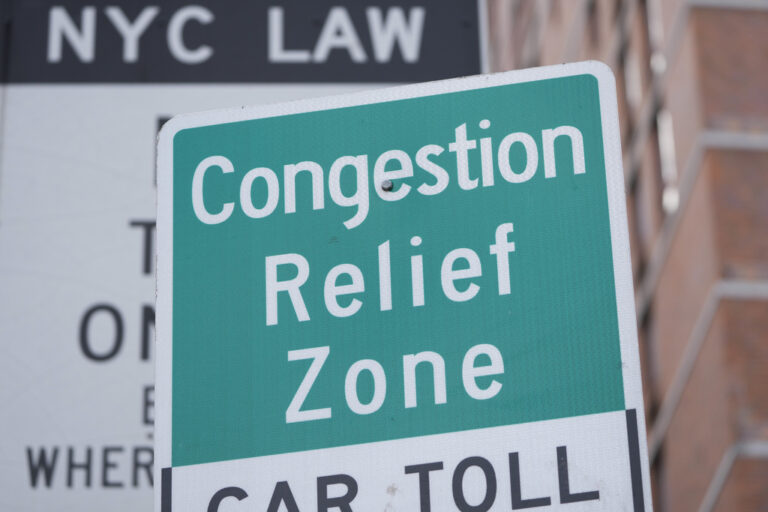As a freshman congressman, Republican Ted Budd seems to have several strikes against him as he faces his first re-election in his North Carolina district.
He belongs to the same party as the president, a historical negative in midterm elections. President Donald Trump’s national disapproval ratings have risen since taking office. And Budd faces a female challenger in a year when women’s political involvement has been intensifying.
Yet Budd has at least one built-in advantage: He’s running in a district intentionally drawn to favor Republicans.
Unless the U.S. Supreme Court says otherwise, “it is constitutional to politically gerrymander,” Budd said while defending a practice that also has benefited Democrats in the past.
Across the nation, numerous congressional Republicans are hoping to survive forecasts of a Democratic wave due partly to a political seawall erected by Republicans who controlled the redistricting process in more states than Democrats after the 2010 census. The big question is whether enough of that seawall will hold to thwart Democrats’ attempt to retake the U.S. House.
Democrats need to gain 23 seats in the Nov. 6 elections to wrest the House away from Republicans for the first time in a decade. Believing it has a chance, the Democratic Congressional Campaign Committee has targeted 85 Republican-held seats in 31 states, ranging from GOP strongholds such as Texas to Democratic-leaning states such as California.
Those targets include about two dozen Republican seats in districts where Democrat Hillary Clinton beat Trump in 2016 and three dozen that Republicans won with less than 58 percent of the vote in the last election.
Nationally, election forecasters have rated more than 40 Republican-held seats as tossups or leaning toward Democrats, with only several Democratic-held districts in a similar position to flip.
Democratic gains seem all but assured in some states. In Pennsylvania, candidates will be running in new districts that improve Democrats’ chances after the state Supreme Court ruled the old ones amounted to an unconstitutional partisan gerrymander by the Republican-led state Legislature. Under the old map, the GOP had won 13 of the state’s 18 U.S. House seats in three straight general elections, despite Democrats holding a statewide edge in registered voters.
Yet nationally, a blue wave of strong Democratic turnout still could “crash against a wall of gerrymandered maps,” the Brennan Center for Justice said in a report earlier this year.
To flip control of the House, the Brennan Center has projected that Democrats would need to win the national popular vote for congressional districts by a nearly 11 percentage point margin — which would be their largest midterm victory size since 1974.
This election is “a true test case of voter behavior and the insurance policy that Republicans hoped to have with these districts,” said Michael Bitzer, a political scientist at Catawba College in North Carolina.
Republicans had the upper hand during the 2011 redistricting because they flipped numerous state legislative chambers and governor’s offices during the 2010 elections. Since then, the GOP has expanded its state control to two-thirds of all legislative chambers. It now holds a trifecta of both houses and the governor’s office in 25 states compared with just eight for Democrats.
Politicians who want to gerrymander typically pack lots of voters who support the opposing party into a single district while spreading their own likely voters among multiple districts. The result lets the minority party overwhelmingly win one district while the majority party wins several districts by smaller margins.
That’s the scenario in North Carolina, where Republican state lawmakers under a court order to fix racial gerrymandering acknowledged redrawing the congressional districts in 2016 to try to ensure they could win 10 of the state’s 13 House seats. Democrats won three seats that year, each with at least 67 percent of the vote. In six of the 10 districts won by Republicans, the GOP candidate received 59 percent of the vote or less.
A federal court in August declared 12 of North Carolina’s 13 districts unconstitutional partisan gerrymanders and ordered yet another redraw, but placed that on hold pending an appeal to the U.S. Supreme Court.
Budd, the owner of a gun store and firing range, had the state’s smallest GOP victory margin in 2016 while running as a political outsider for the open 13th District, which reaches west from the Democratic-leaning city of Greensboro into suburban and rural Republican areas.
Trump, who won the district by a 9 percentage point margin, has helped raise money for Budd’s re-election in a race that mirrors national themes. Budd has played up an improved economy. His Democratic challenger, Kathy Manning, a Greensboro attorney and community leader, has highlighted Budd’s vote to repeal and replace Obama’s health care law while decrying a Congress she says is dysfunctional.
The Democrats’ quest for a House majority also targets several seats in Ohio, where Republicans outnumber Democrats 12-4 in the state’s congressional delegation. One target is Rep. Steve Chabot, who lost his Cincinnati seat in a 2008 Democratic wave but retook it two years later and has retained it under a 2011 redistricting that added more Republican-leaning voters.
Earlier this year, Ohio voters overwhelming approved a constitutional amendment that overhauled redistricting in the state to make it a bipartisan process. But it won’t kick in until after the 2020 Census.
Democrats also are targeting eight districts in Texas, where the GOP controls 25 of the 36 congressional seats. Many of the state’s largest cities have liberal leanings, but Republican state lawmakers spliced them together with suburban and rural districts containing more conservative voters. Notoriously liberal Austin, for example, was sliced into six stretched-out districts, five of which have been won by Republicans.
The Nov. 6 elections will show whether the districts engineered to elect Republicans can continue to do so amid growing minority populations and shifts among suburban woman toward Democrats.
“What the Republicans tried to do is to create sufficiently safe districts. What they didn’t anticipate was that the national conditions might have changed so that those districts … end up becoming much more competitive,” said Sean Theriault, a professor of government at the University of Texas.
For the first time since the 2011 redistricting, the Democratic Congressional Campaign Committee has added a suburban St. Louis district to its targets.
Rep. Ann Wagner is a former chairwoman of the Missouri Republican Party who won re-election two years ago with about 58 percent of the vote, putting her district in the outer realm of those Democrats hope to flip if they have a big day on Nov. 6.
But Wagner said she is well positioned to withstand a Democratic wave in what she describes as “the only swing seat in the state.”
“It’s a heavily suburban district — a lot of women voters,” Wagner said. “I am an absolute reflection of the district. I’m a 56-year-old woman who’s raised her family here, who works, who’s been involved in the community.”
Democratic challenger Cort VanOstran is a 30-year-old attorney who’s been volunteering for Democratic campaigns since he was 17. He said he decided to run after his mother died of breast cancer in late 2016 and Wagner voted in 2017 for a bill to repeal the federal health care law that had allowed his mom to buy insurance through an online marketplace.
“I think that Missouri is a victim of gerrymandering,” VanOstran said. But “I think the DNA of this district is very good … Folks here are independent-minded.”
(AP)












4 Responses
I find it very interesting that the courts never found partisan gerrymandering unconstitutional during the forty year stretch that the Democrats gerrymandered their majority in the House of Representatives. Only now that the shoe is on the other foot do we suddenly have these newfound rulings.
Of course this is never mentioned in any of the “Republicans are gerrymandering” articles that I’ve read from the AP et al.
The states that went Democratic in 2010’s elections were gerrymandered for the Democrats, and the ones that went Republicans in 2010 were gerrymandered for the Republicans. In New York the legislature split, so each house of the Legislature was gerrymandered for the party with a majority. In Maryland which the Democrats won, the General Assembly was gerrymandered for the Democrats. Under Obama, the Democrats ignored the state elections especially in the “flyover regions”, and they have been paying the price for the last eight years.
It will probably require a constitutional amendment to ban gerrymandering nationally, since the Supreme Court is unlike to reverse a practice that has been in effect for 200 years.
Jerry Smary wake up Yiddium vote Republican get the ANTI SEMITIC DEMOCRATS OUT OF CONTROL
Never again